Shoulder Surgery
Home » Operations » Shoulder Surgery
Surgical treatment of shoulder instability
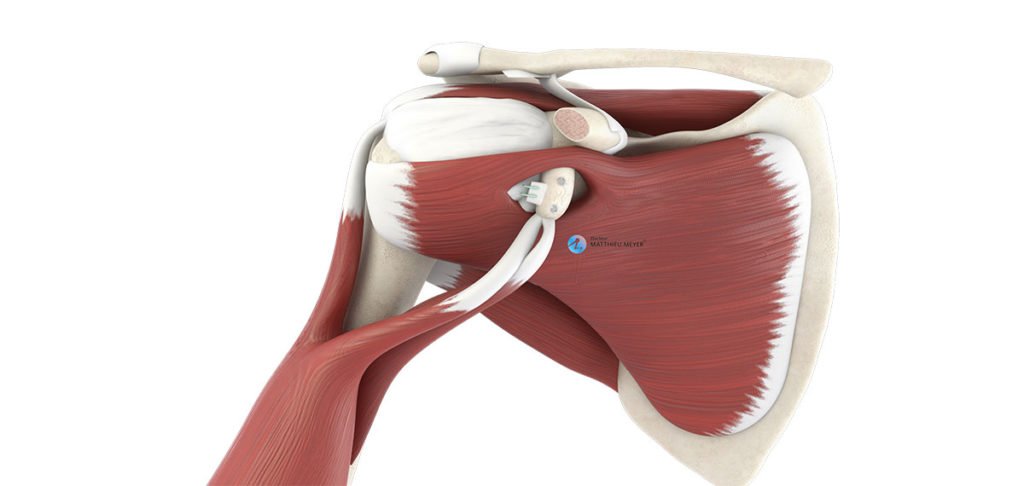
Coracoid Block (Latarjet Procedure)
A coracoid bone graft (Latarjet procedure) is proposed in the case of recurrent anterior luxations to restore shoulder stability enabling a return to the same level of sports activity as before. This procedure is carried out using a minimally invasive approach and provides reliable shoulder stabilisation even when luxations have caused off-track bone damage to the head of the humerus or the scapula.
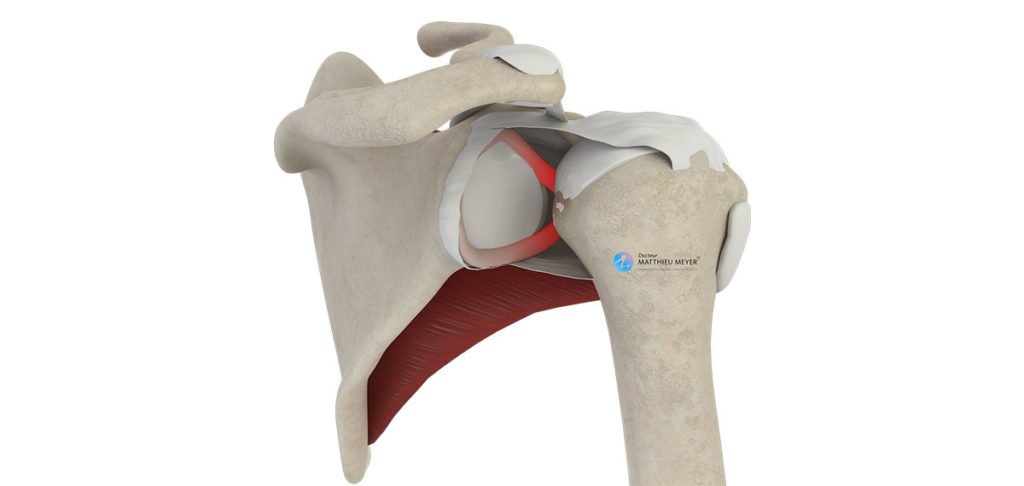
Arthroscopic Capsulolabral Repair
(Bankart Procedure)
Capsulolabral repair (Bankart repair) is proposed in the case of recurrent anterior subluxations and luxations to restore shoulder stability enabling a return to the same level of sports activity as before. This procedure is carried out arthroscopically, a minimally invasive technique, and is generally proposed in the absence of off-track bone damage to the head of the humerus or the scapula in patients that do not play contact or throwing sports.
Surgical treatment of a painful shoulder
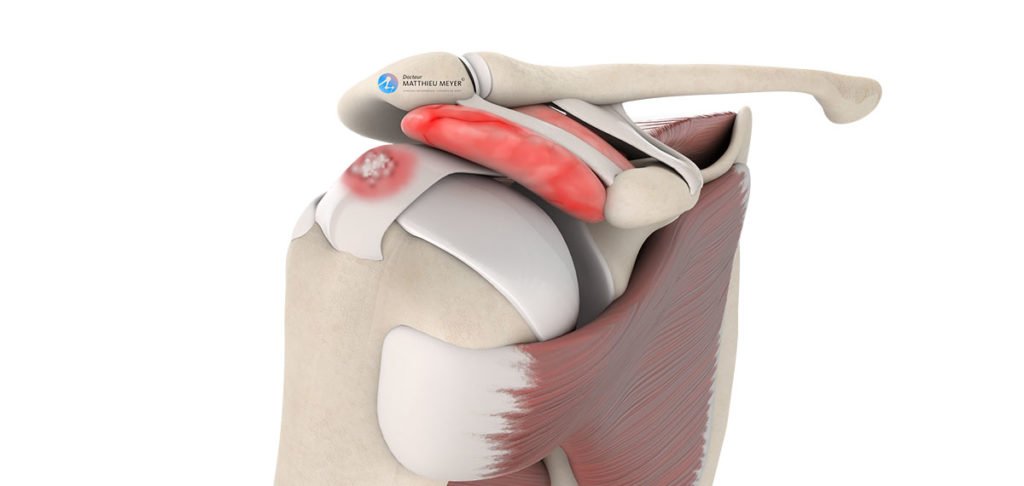
Arthroscopic Removal of Rotator Cuff Calcium Deposits
The appearance of calcium deposits on one of the rotator cuff tendons is a common pathology that can cause intense pain. Calcium deposits usually disappear spontaneously but this does not happen in some cases and the pain persists. If medical treatments do not relieve the pain, the calcium deposits can be removed arthroscopically. In most cases, the operation eliminates the pain within 3 to 6 months.
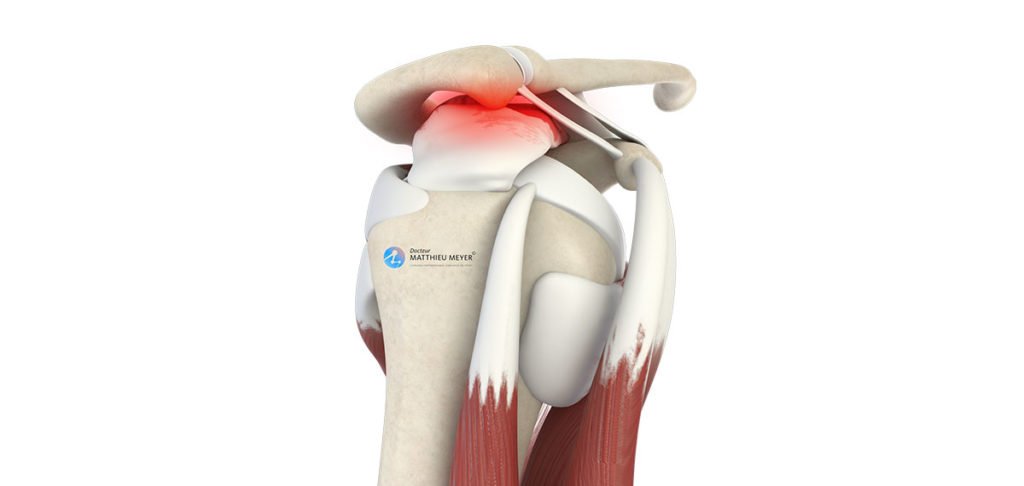
Arthroscopic Shoulder Acromioplasty
An acromioplasty is proposed in the case of subacromial impingement that is not relieved by medical treatment and rehabilitation. The acromion is an arched bony process on the shoulder blade of which the shape encroaches on the superficial side of the rotator cuff tendons below it. The acromioplasty aims to flatten the acromion to prevent any impingement with the superficial side of the rotator cuff tendons. This operation is performed arthroscopically and allows early mobilisation of the arm and shoulder.
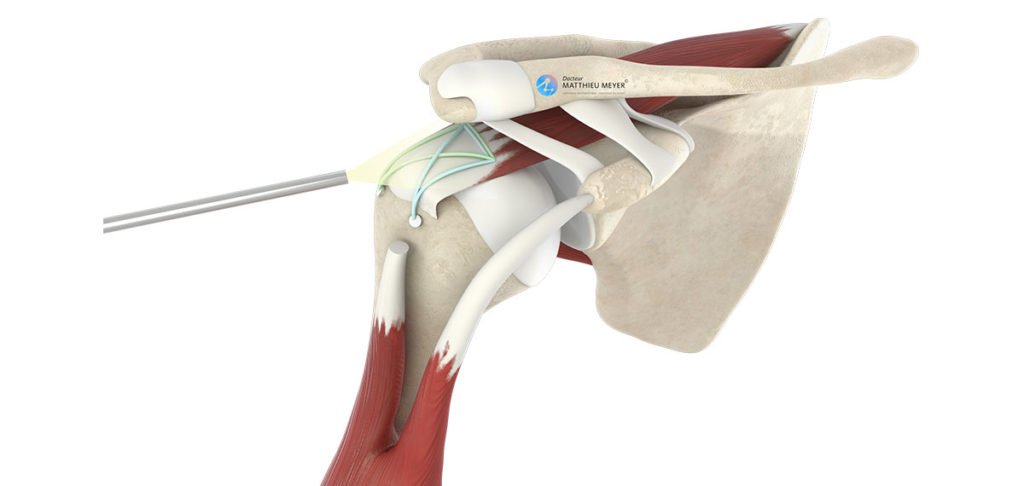
Arthroscopic Rotator Cuff Repair
The rotator cuff tendons can tear suddenly due to trauma or, more commonly, slowly due to tendon deterioration sometimes exacerbated by subacromial impingement. In some cases, the rotator cuff can be repaired to relieve the pain, recover range of motion, and restore shoulder muscle strength. This operation is performed arthroscopically and the arm must be immobilised for 6 weeks after the operation before active rehabilitation begins. Total recovery takes 6 to 12 months.
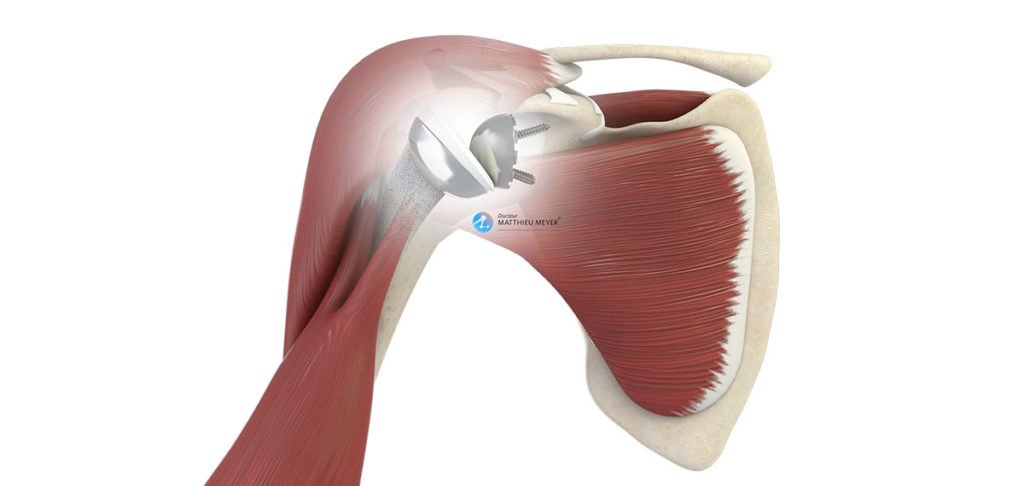
Total Shoulder Replacement
A total shoulder replacement is proposed in the case of wear of the scapulohumeral joint cartilage causing pain and a decrease in mobility of the arm that is no longer relieved by medical treatments and rehabilitation.
A standard total replacement is only performed when the rotator cuff is still intact whereas a reverse replacement is indicated in the case of a partial or total rupture of the rotator cuff.
Surgical treatment of traumatic shoulder injuries
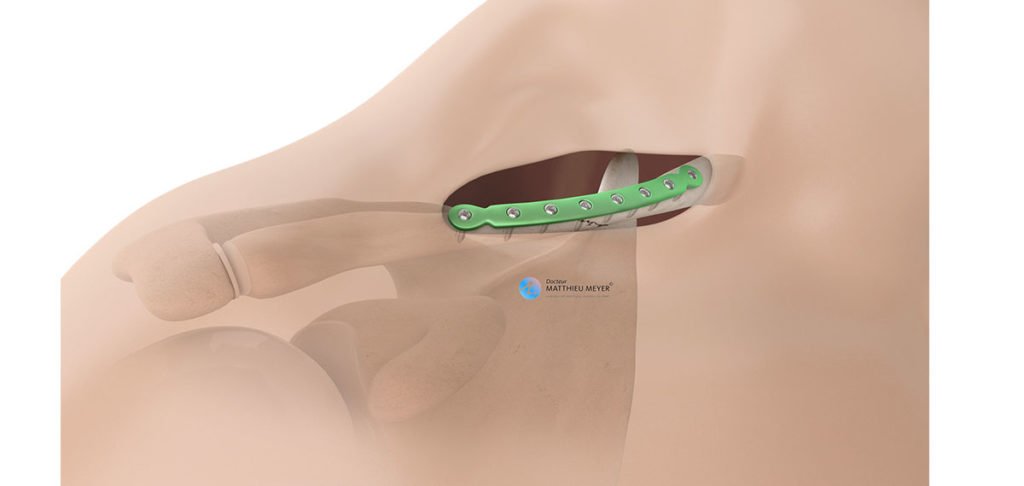
Fractures of the clavicle
Fractures of the clavicle commonly occur after a fall on the shoulder. For a long time, these fractures were simply immobilised, even if the fracture was greatly displaced. In adults, some fractures can heal poorly or result in poor functional outcomes if the clavicle heals in a non-anatomical position. Even if immobilisation alone can be proposed in most cases, surgical treatment with a plate ensures better healing and improves the anatomical, functional and aesthetic outcome.
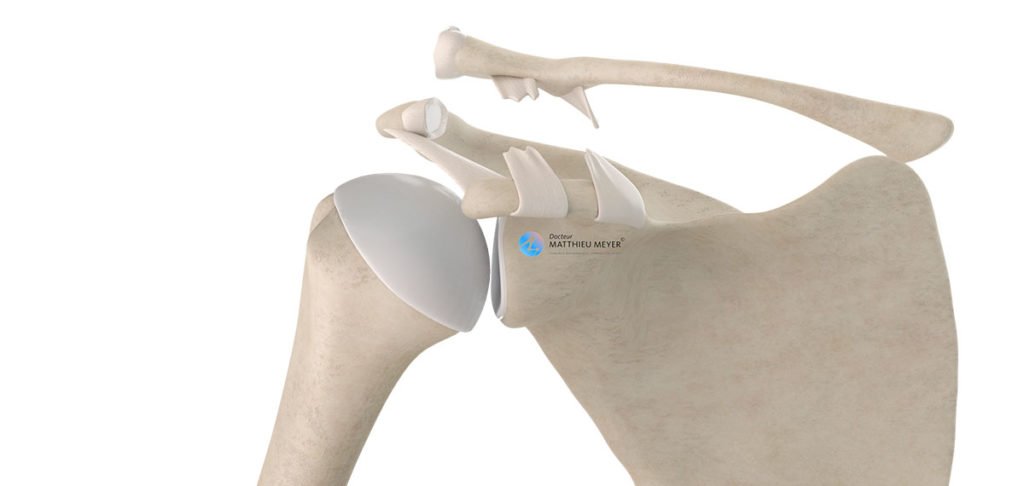
Acromioclavicular Dislocation
After heavy contact or a fall on the shoulder, the ligaments connecting the clavicle to the scapula can be partially or totally ruptured causing acromioclavicular dislocation or separation. In some cases, reduction of the dislocation and stabilisation of the acromioclavicular joint is necessary. This can be achieved with an artificial ligament which stabilises the joint without affecting the cartilage. This technique is proven especially in athletes. It requires postoperative immobilisation for 6 weeks and sport can be resumed 3 to 4 months after the operation.
Make an appointment
please do not hesitate to contact us or make an appointment online via DoctoLib
